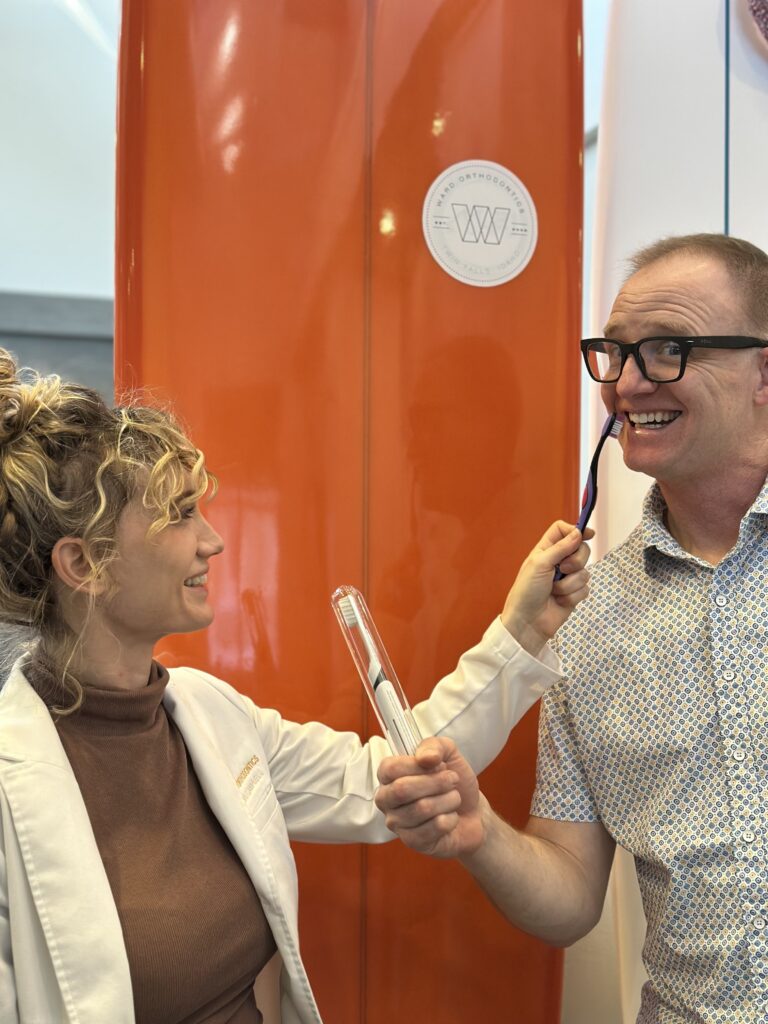Everyone knows that proper brushing & having proper tooth hygiene is very important for your health- but the question is- does an electric toothbrush or a manual toothbrush do a better job?

Historians believe that toothbrushes were invented over 3500 years ago in ancient Egypt. These early toothbrushes are believed to have started out as sticks with frayed ends that people would chew on to clean their teeth. Around 800 years ago toothbrushes began to look more like our modern toothbrushes today. It’s thought that in China that people started using stiff animal hairs to attach bristles to their toothbrushes. Thankfully, toothbrushes have advanced a lot over the years and now manual toothbrushes have several features that help to maximize your oral health. Today toothbrushes are made from soft plastic handles with soft bristles. Many toothbrushes feature a slightly flexible head that allows you to brush in the hard-to-reach spaces at the back of your mouth. Several models also offer a tongue cleaner with small raised rubber pieces on the back of the toothbrush head. These features all aid in getting plaque removed from your mouth, keeping your teeth clean and healthy, and avoiding decay and gum disease.

Over time, toothbrushes have continued to advance and the first electric toothbrush was created in 1954. Featuring a long electric cord, a bulky handle, and stiff brushes, the electric toothbrush has come a long way since it’s early days. Electric toothbrushes today are much easier to handle with cordless features that allow the toothbrush to charge when not in use. Electric toothbrushes also have soft plastic bristles that do the work of removing plaque from your mouth to keep decay to a minimum. Electric toothbrushes can be as simple as battery powered and cost as little as $8-$10. There are also some more high-end models that can feature a timer to let you know when to move to other areas of your mouth, when your total brushing time is complete, & when to decrease the pressure you apply. There are also a few models that offer connection to your smart phone, where an app can tell you specific places in your mouth where you can make improvement recommendations for better brushing results. These models can cost around $250.00.

Knowing how similar electric and manual toothbrushes are, many people want to know- is one type superior to the other? Is there one style of toothbrush that will do a better job at keeping your mouth clean and healthy?
In 2014, an independent research company by the name of Chochrane Collaboration, did a study on this topic. In the study, the company collected brushing data from 5,000 individuals, adults and children, and found a reduction of 21% of plaque with participants who used electric toothbrushes, compared to the individuals who used manual toothbrushes after 3 months.
A German study published in 2019 followed electric toothbrush users for an 11 year period. They found that not only did the electric toothbrushes remove more plaque, but consistent use also led to reduced gingivitis, healthier gums, and reduced periodontal disease.
Electric toothbrushes don’t come without any challenges, however. Electric toothbrushes can be more powerful than expected. There are times when dentists may recommend using less force when brushing, because the electric toothbrush can be too forceful. If too much pressure is applied, the enamel can be taken away, exposing or even removing the next layer of the tooth, the dentin. If dentin is exposed or removed, it can lead to tooth sensitivity, and also increased risk of cavities. However, this is not a problem specific to JUST electric toothbrushes. Often times, people don’t realize how forceful they are brushing even with their manual toothbrushes.
While time and time again studies show the benefits of electric toothbrushes over manual toothbrushes, there’s nothing wrong with manual toothbrushes! Manual toothbrushes will still remove plaque and keep your oral health in line. The best thing you can do to help make the most of your manual toothbrushing, is knowing the best technique and making sure you brush 2-3 times per day! To maximize the effectiveness of your manual toothbrush, be sure to spend equal time on all four quadrants of your mouth, brush lightly, and be sure to spend the full 2 minutes brushing.

